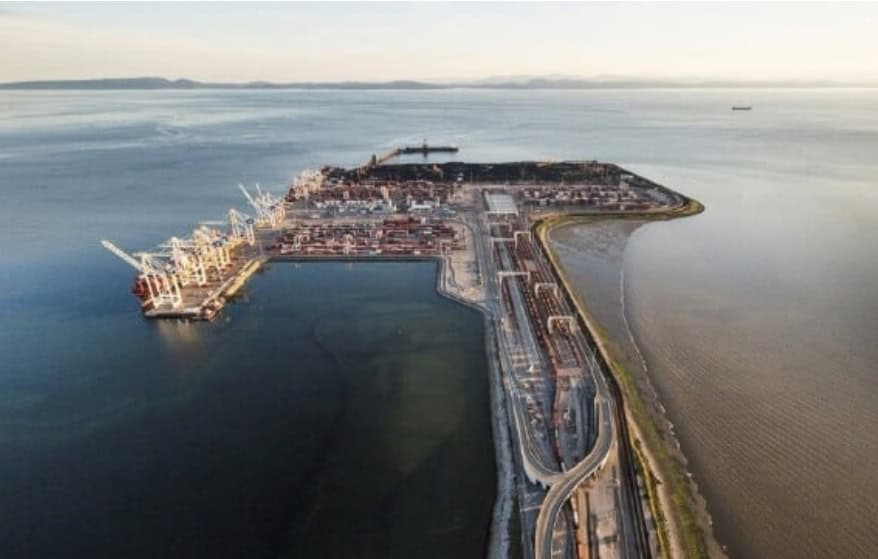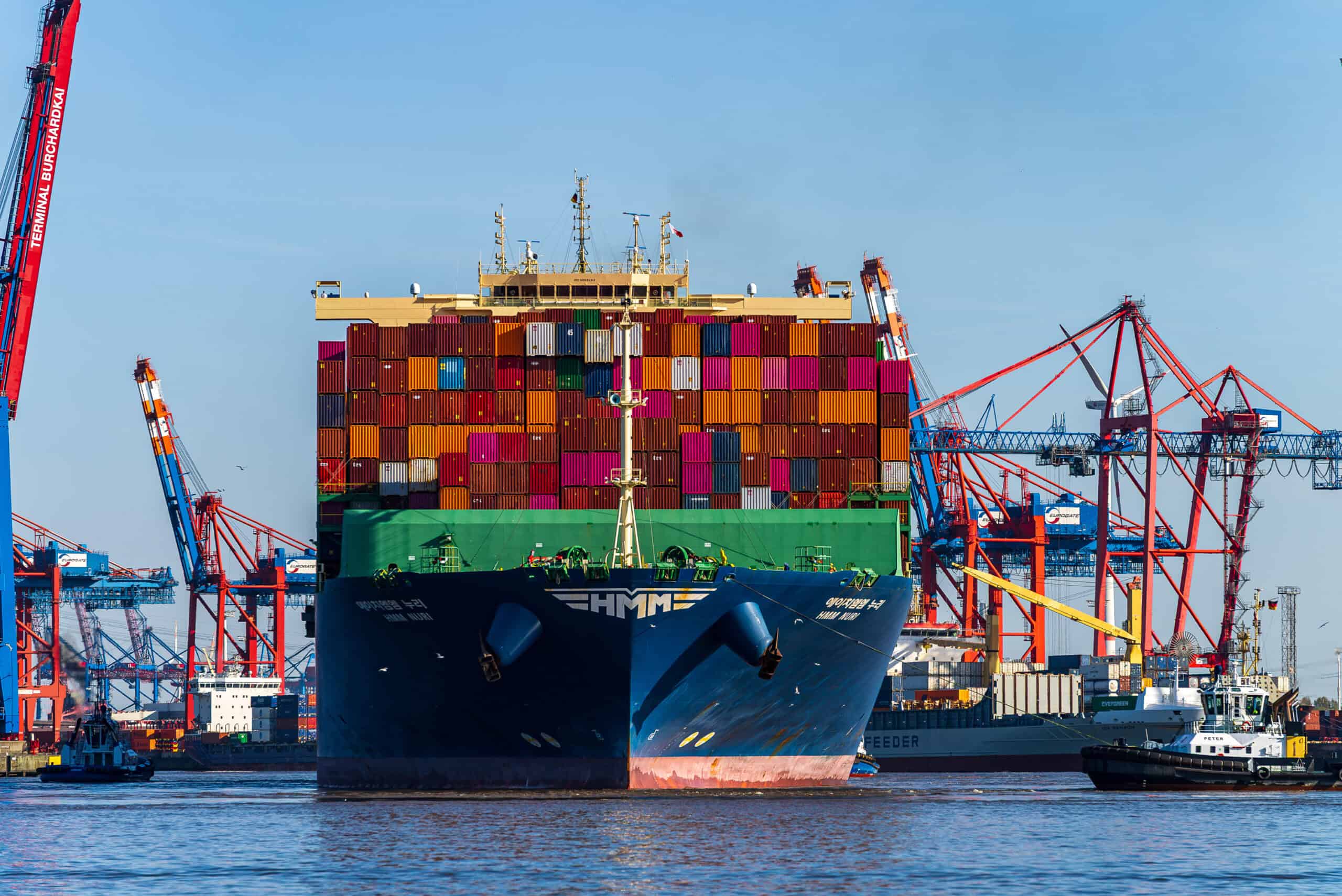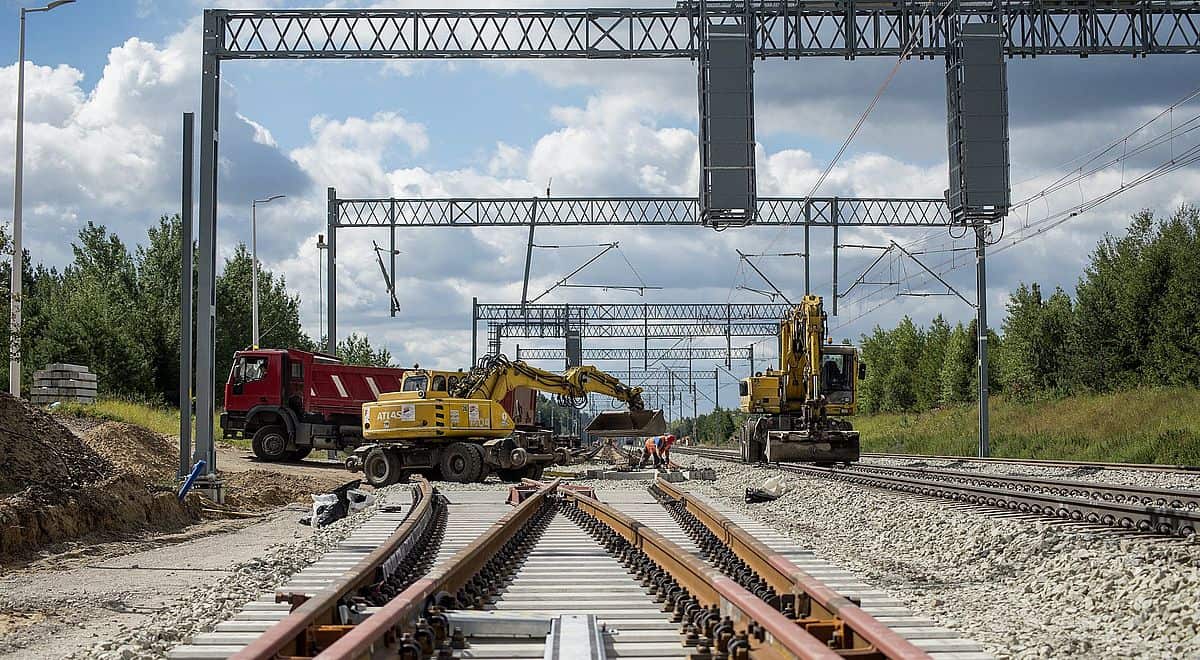The Vancouver Fraser Port Authority is taking another key step in its plans to add a new major container terminal to increase the capacity and efficiency of Vancouver’s port. The authority has announced that it has begun the search for a contractor to build the mega terminal, with the goal of selecting a company to undertake this massive project by the end of this year.
Although the controversial Roberts Bank Terminal 2 (RBT2) project continues to face obstacles, the port authority is moving forward with key actions towards the realization of this $3.5 billion investment. Since the project was approved by the Canadian government in April 2024, its implementation has continuously faced opposition.
The RBT2 project involves the construction of a new artificial island and a three-berth marine container terminal near the existing port facilities at Roberts Bank in Delta, British Columbia. Once completed, the terminal is expected to provide an additional 2.4 million TEU in capacity, increasing the throughput of Canada’s Pacific coast ports by approximately one-third.
The project is promoted as a breakthrough for Vancouver’s long-term port development plans. It is expected that RBT2 will strengthen Canada’s supply chain resilience and bring significant economic benefits. These include more than 18,000 jobs during construction, over 17,300 permanent jobs, and support for trade diversification by unlocking over $100 billion in new trade capacity, contributing $3 billion annually to GDP.
However, since its announcement, the project has faced opposition from local communities and environmental organizations. Last year, several conservation groups filed a lawsuit, arguing that the project poses a serious threat to endangered species.
Despite this opposition, the port authority continues to advance the implementation of this massive undertaking, which includes the construction of approximately 100 hectares of marine landmass, a 35-hectare widened causeway, a 1,300-meter wharf structure, and an expanded tug basin. The project also includes the construction of a fish passage at the marine terminal to support juvenile salmon migration, as well as civil works aimed at enhancing habitats, including the South Arm Jetty Tidal Marsh project.
Interested companies have until the end of September to submit their bids. The port authority plans to shortlist three finalists by the end of November, who will then be invited to submit final proposals.
“To meet Canada’s needs in today’s rapidly changing trade environment, we have accelerated our efforts to deliver Roberts Bank Terminal 2 – a project that will strengthen Canada’s economic security and enhance our trade resilience,” said Victor Pang, Chief Financial Officer of the Vancouver Fraser Port Authority.
“The terminal will be a catalyst for Canada’s economic transformation – supporting the export of Prairie grain and British Columbia’s forestry sector, as well as communities that rely on reliable and affordable access to essential goods on store shelves.”
Construction of the terminal is scheduled to begin in 2028, with operations expected to commence by the mid-2030s. Conceived in 2013, RBT2 is presented as a critical infrastructure project aimed at addressing the forecasted capacity limits of Canadian ports by the early 2030s.
The Port of Vancouver remains Canada’s gateway to diverse markets, handling trade worth approximately $300 billion annually with up to 170 countries. This makes the Pacific Gateway the country’s most important trade corridor. Last year, a record 158 million metric tonnes of cargo moved through the port, representing a 5 percent increase compared to 150 million tonnes in 2023.
The West Coast is expected to play an increasingly important role in Canada’s future trade, particularly in strengthening ties with Asia. As part of these efforts, Canada this month launched exports from its first LNG terminal north of Vancouver, which will supply customers in Asia.



